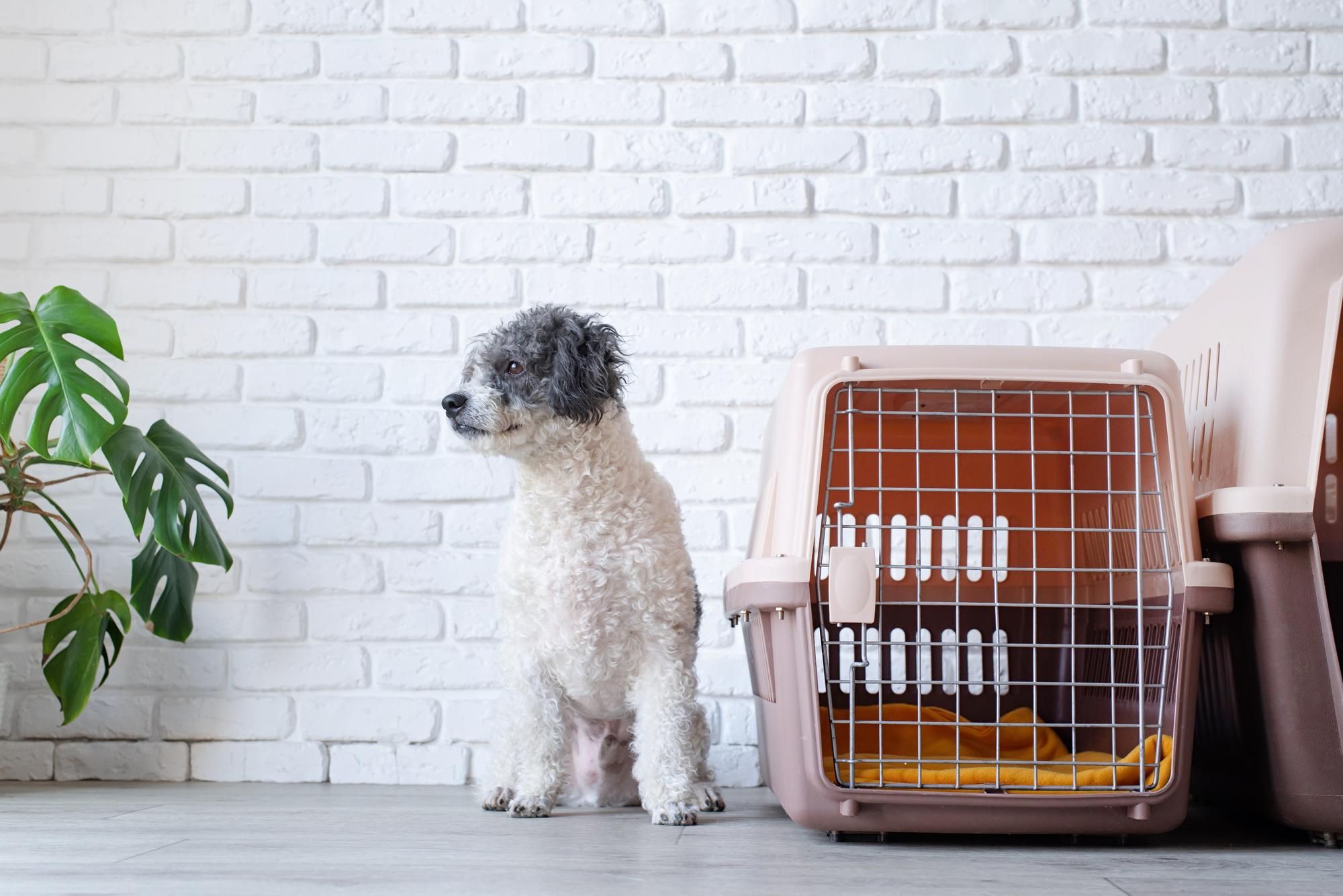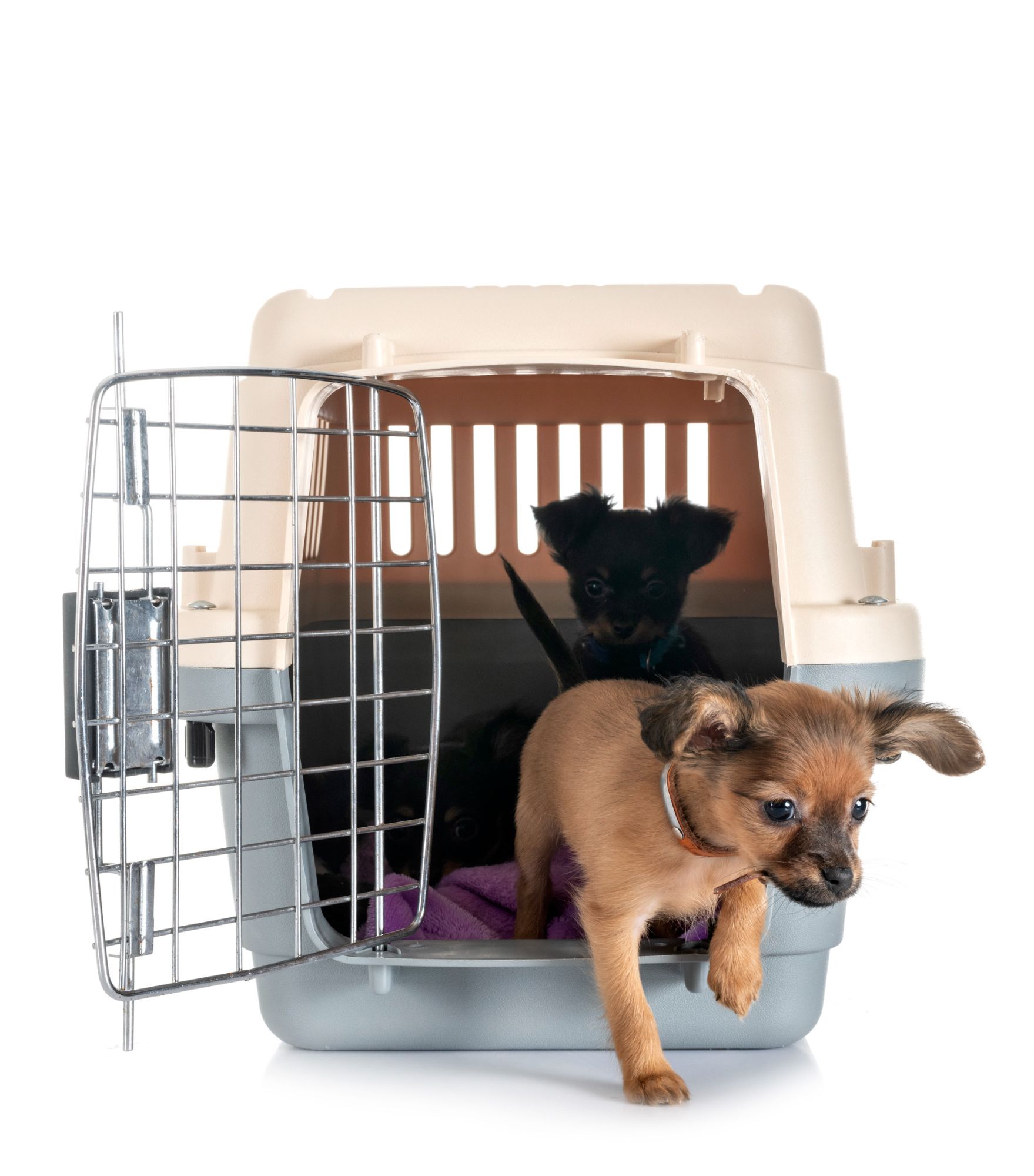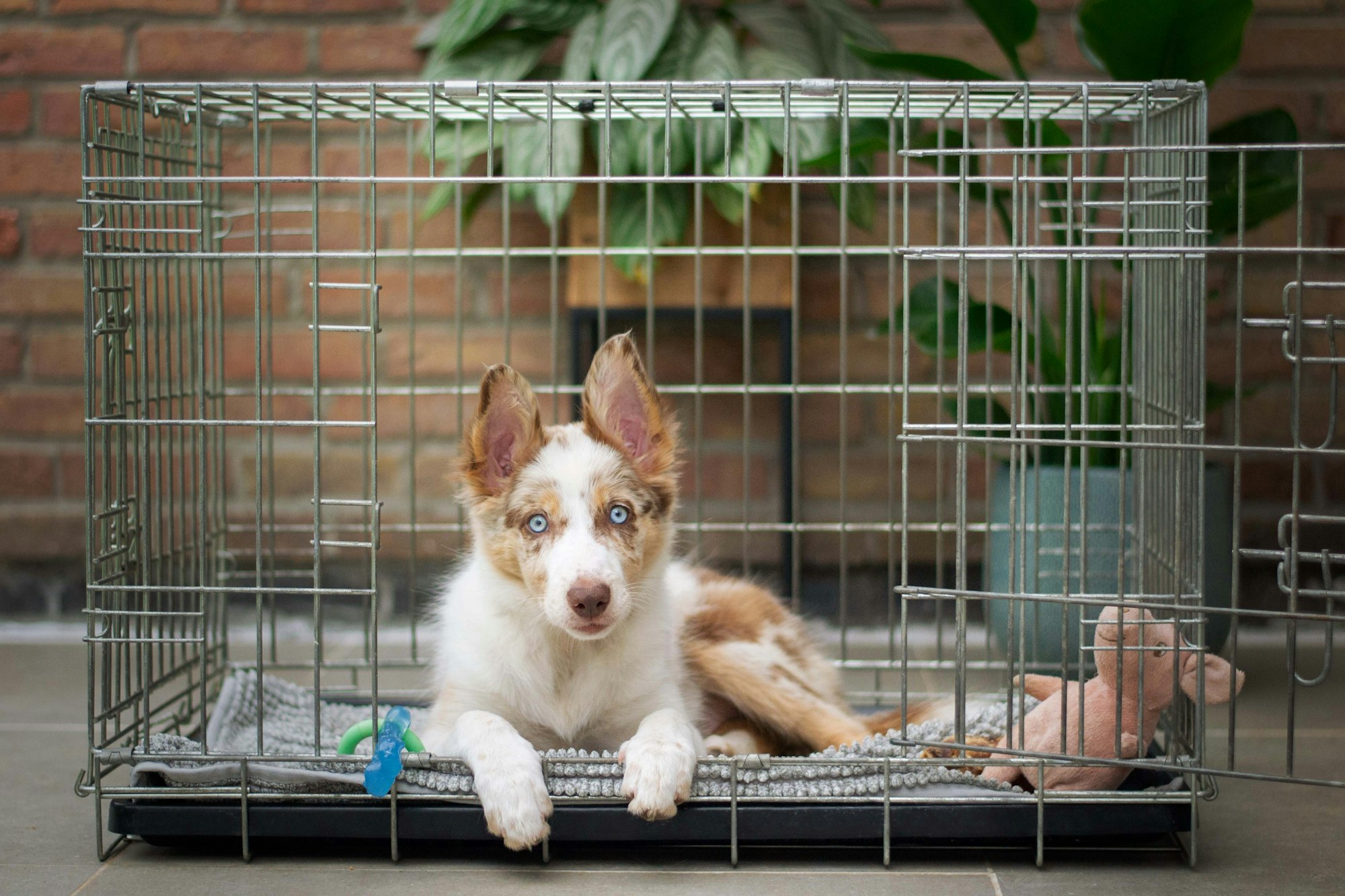Adopting a rescue dog can be a fulfilling and life-changing experience, but it comes with its own set of challenges. Many rescue dogs have faced traumatic experiences and require patience, understanding, and specialized training to successfully adjust to their new homes. One crucial aspect of this training is crate training.
Crate training effectively teaches your adopted dog important skills such as housebreaking, reducing anxiety, and creating a safe space for them. However, crate your dog training must be done correctly and patiently to ensure the process is stress-free for both the owner and the dog.
This article will provide a step-by-step guide to effectively crate training your adopted dog. We will explore common misconceptions about rescue dogs and debunk myths around crate your dog training while providing solutions to typical challenges that might arise during the process. Implementing these steps consistently over time can revolutionize your rescue dog's experience in their new home.

Understanding Your Rescue Dog
Possible traumas and experiences that rescue dogs may have faced, the need for patience and understanding during training, and debunking common misconceptions about these dogs are crucial factors to consider when embarking on dog crate training.
Rescue dogs are often abandoned or surrendered by their previous owners, leaving them with a history of neglect, abuse, or lack of socialization. As a result, they may exhibit behaviors such as fearfulness, anxiety, aggression, or hyperactivity that require extra attention and care during the training process.
One common misconception about rescue dogs is that they are damaged goods with irreparable behavioral issues. However, this couldn't be further from the truth. While it's true that some rescue dogs come with challenges due to their past experiences, most can learn new skills and adapt to their new environment with patience and understanding from their new owners.
Another myth is that crate training is cruel or inhumane for rescue dogs since they might already have gone through trauma before being rescued. On the contrary, use crate training can provide a safe space for anxious or fearful dogs while teaching them valuable skills such as housebreaking and self-control.
By understanding your rescue dog's background and providing them with adequate support during crate training sessions, you can help them become well-adjusted pets who feel secure in their surroundings.
What is The Importance of Crate Training?
Crate training has numerous benefits for both owners and dogs, particularly when it comes to crate training a rescue dog. Using a crate can help with house training and keeping the dog safe while unsupervised.
But it can also provide a sense of security and comfort for dogs who may be experiencing anxiety or stress due to past traumas. By making the crate a positive space through rewards and positive reinforcement, owners can help their rescue dog in the crate adjust to their new surroundings more quickly.
However, some common concerns and misunderstandings about crate training exist that must be addressed. Some people worry that using a crate is cruel or that it will lead to separation anxiety in their dog. But when done correctly and with patience, using a crate can actually reduce separation anxiety by providing a safe space for the dog when alone.
Owners need to understand that training a rescue dog takes time and effort. Still, by incorporating proper crate training techniques into their routine they can create an environment where their rescued pup feels secure and happy.

How long does it take to crate train a Rescue dog?
Acclimating a rescued dog to a crate can vary in duration, but it ultimately depends on the dog's temperament and past experiences. Some dogs may take to their crates quickly, while others may require more time and patience before feeling comfortable inside the crate. Owners need to remember that every dog is different, and as such, crate train a dog can take anywhere from several days to several weeks.
During this process, owners should start by introducing their puppy to the crate in a positive manner. This involves placing treats or toys inside the crate for the dog to explore and rewarding calm behavior when they are inside the crate.
As the puppy becomes more comfortable with being inside the crate, owners can gradually increase the amount of time they spend in there without supervision until eventually leaving them alone overnight.
With consistent training and positive reinforcement, even rescue dogs who initially exhibit anxiety or fear towards crates can become comfortable with them over time.
Is it good to crate-train a rescue dog?
Crate training can positively impact the behavior and well-being of rescued dogs. It is important to remember that crates should not be used as punishment but rather as a safe space for the dog. When crate training an older dog, choosing the right crate size and style is essential to ensure maximum comfort and safety.
Creating a positive association with the crate is also crucial by slowly introducing your dog to it and rewarding them when they enter or stay inside. It is recommended to start with short periods of time and gradually increase them based on your dog's comfort level. Additionally, watching your dog's behavior while they are inside the crate can help you identify any potential issues or discomfort they may have.
How do I make my rescue dog comfortable in a crate?
Crate training a rescued dog requires patience and understanding to ensure their comfort and well-being. Begin the process by allowing your dog to familiarize themselves with the crate, using treats or toys as lures to form positive associations. Encourage exploration without coercion, letting them approach the crate freely. Start by feeding them near the crate entrance and then progressively move their food bowl inside, so they begin to dine comfortably within.
As your dog grows accustomed to the crate, extend their time inside while consistently rewarding positive behavior. This adjustment requires a consistent approach, but it's crucial for your dog to feel safe in their new setting. Make the crate inviting by adding soft bedding, such as blankets or towels, and placing familiar items, like toys or items with your scent.
Never utilize crate training as a form of punishment or confine them for prolonged durations. Teach them verbal cues like 'crate' or 'go home' to indicate it's time to retire to their space. Always monitor your dog during initial introductions to ensure a smooth crate training experience.
How to Prepare a Dog for Crate Training?
Preparing a dog for crate training involves several key steps.
1. Choosing the right crate: size, material, and comfort
When choosing a crate for your adopted dog, it is crucial to consider their breed and weight to determine the appropriate size.
A too-small crate may make your older or adult dog feel uncomfortable and cramped. On the other hand, a too-large crate may lead to accidents as they could use one end for sleeping and the other for relieving themselves.
To ensure maximum comfort, it is recommended that you choose a crate with sufficient space for your dog to stand up, turn around, and lie down comfortably.
Additionally, the crate's material should be considered when selecting one. Dogs tend to chew on things when they are anxious or bored; thus metal crates may not be ideal if this behavior presents in your adopted pet.
Soft-sided crates made from fabrics such as mesh can be easily destroyed by dogs who like chewing things; therefore plastic or wire crates might be better alternatives.
In addition to considering the size and material of the crate, including soft bedding can also help provide additional comfort during training sessions.

2. Positioning the crate: finding the right spot in your home
After choosing the right crate for your adopted dog, the next step is to find the perfect spot in your home to place it.
This is important because putting the crate in a location that is too busy or noisy may cause stress and anxiety for your pup. Conversely, placing it in an isolated area may make them feel left out and unhappy.
To start crate training to put your dog in, find a quiet corner or room with enough space to move around comfortably in the crate.
Avoid placing it near windows or doors with frequent foot traffic as this might scare them and make them uncomfortable inside their new home. It's also essential to remember that even though you want to give your furry friend some privacy and peace while inside their crate, they still need to be able to see what's happening outside of it.
Therefore, ensure that any nearby objects or furniture doesn't block their line of sight. By finding the right spot for the crate, you are setting up a comfortable environment to encourage positive associations with being crated.
3. Familiarizing the dog with the crate: gradual introduction
The gradual introduction is crucial in familiarizing the dog with the crate and reducing their anxiety towards it. Introducing the crate too quickly can cause fear and anxiety, making your dog less receptive to crate training.
To begin a gradual introduction, start by placing treats inside the crate to encourage to get your dog to explore it. Avoid forcing your dog into the crate as this may create a negative association with it.
Once your dog starts exploring the crate on its own, place their meals inside as well. This helps them associate positive feelings with being in the crate.
Encourage your dog to enter the go in the crate voluntarily by leaving toys or treats near the entrance and gradually moving them further inside until they are comfortable entering all the way on their own.
Remember that patience is key when introducing crates. Train your dog to their new living space, so take things slow and allow them time to adjust at their own pace.
Implementing Crate Training
The crate training process involves a step-by-step approach to gradually familiarize the dog with the crate. Creating a positive association with the crate is one of the crucial aspects of successful crate training.
However, some dogs may resist or fear being crated, which requires addressing and overcoming these issues through patience and consistency.
1. Step-by-step process of crate training
To successfully crate train your adopted dog, it is imperative to establish a routine and consistently reinforce positive behavior using treats or praise as a form of positive reinforcement.
The first step in the process is to introduce the crate to your dog and make it a comfortable space for them. Start by placing the crate in an area where you spend most of your time, such as the living room or kitchen.
Leave the door open and place some soft bedding inside, toys, and treats. Encourage your dog to explore the crate on their own and reward them with praise or treats when they do.
Once your dog becomes comfortable in the crate, briefly close the door while you are still present. Reward them whenever they enter or exit the crate without hesitation or anxiety. Slowly increase the time they spend in their crate until they can comfortably stay inside for several hours at a time.
It's important to remember that this process may take longer for older or senior dogs who may have developed habits that are difficult to break. Consistency, patience, and positive reinforcement will help ensure successful crate training for any adopted dog is still regardless of age or breed.
In conclusion, implementing a step-by-step crate training process can benefit both you and your adopted dog. Ensuring that they have a safe space to retreat when needed will reduce anxiety levels while reinforcing good behavior through positive rewards helps with obedience training.
As a responsible dog owner, patience is key during this process especially if you have an older adopted dog who might need more encouragement compared to younger ones but ultimately consistency will lead to success!

2. Creating a positive association with the crate
Establishing a positive association with the meals in the crate can help ease anxiety and stress for your adopted dog when it comes to spending time in their own space.
Crate training can benefit both you and your furry friend by providing a safe and comfortable environment for them and giving you peace of mind knowing that they are secure while you are away.
Here are some tips on how to create a positive association with the crate with a treat:
1. Introduce the crate gradually: Start by leaving the door open and placing treats or toys inside to encourage your dog to explore the crate on its own terms.
2. Use positive reinforcement: Reward your dog with treats or praise every time they voluntarily enter or stay in the crate.
3. Make it comfortable: Add blankets or bedding to make your dog's crate cozy and inviting.
4. Increase time in crate slowly: Gradually increase your dog's time in their crate, starting with short intervals and building up over time.
With these steps you can help ensure that your adopted dog associates their crate with positive experiences, making them more likely to feel comfortable spending time in it when needed.
Remember, patience is key when it comes to successful crate training. Take things slowly and at your pet's pace, always using rewards and encouragement.
3. Addressing and overcoming potential resistance or fear
Overcoming potential resistance or fear towards staying in a confined space can be challenging for some dogs, especially those with previous traumatic experiences. However, crate training is an excellent way to provide comfort and security to your adopted dog while keeping them safe and secure when you cannot supervise them.
To address any concerns, it's essential to introduce the crate gradually by making it a positive experience through the use of treats and toys during their time inside. Patience is key when addressing any fears or resistance your dog may exhibit toward crate training. It's important not to force your dog into the crate but instead allow them to explore the space at their own pace.
Over time, they will begin to associate the crate with comfort and safety, making it easier for them to stay inside for longer periods without exhibiting signs of anxiety or discomfort. Remember that every dog is different and requires individualized attention when it comes to overcoming resistance or fear towards new experiences like crate training.
By incorporating patience, positive reinforcement techniques, and gradual exposure over time, you can help ensure that your adopted dog feels comfortable and secure in their new home environment.
Common Challenges and Solutions in Crate Training
Typical challenges may arise during the crate training process, especially for an adopted dog that may have a history of fear or anxiety.
One common issue is resistance to entering the crate, which can be addressed by using positive reinforcement techniques such as offering treats and praise when the dog enters willingly.
Another challenge is excessive barking or whining while in the crate, which can be mitigated by gradually increasing the amount of time spent in the crate and providing engaging toys or puzzles for the dog to play with.
To proactively address these challenges, creating a positive association with the crate from the beginning is important by gradually introducing it to your dog and using rewards during training sessions.
Consistency is also key in ensuring successful crate training, as any lapses in routine can lead to confusion and setbacks. Patience is also crucial, as every dog learns at their own pace and some may require more time and effort than others.
Being proactive, consistent, and patient during crate training can help your adopted dog feel safe and comfortable in their new home.
How do you crate train a rescue dog fast?
Having an adopted dog is a rewarding experience, but it comes with its own set of challenges. Crate training is one of the most important and challenging aspects of owning an adopted dog.
As discussed in the previous subtopic, crate training can be difficult for rescue dogs due to their history and past experiences. However, it is possible to successfully crate-train your adopted dog with consistency and patience.
If you are looking to crate-train your rescue dog quickly, there are several steps you can take. First, ensure you have all the necessary supplies including a comfortable crate, treats, and toys. Then follow these three tips:
1. Start Slow: Gradually introduce your rescue dog to the crate. Place treats or toys inside the crate and let them explore it at their own pace.
2. Use Positive Reinforcement: Reward your adopted dog whenever they enter or stay in the crate by giving them treats or verbal praise.
3. Be Consistent: It's important to maintain a consistent routine when it comes to crate training your puppy or adult rescue dog so they understand what is expected of them.
By following these steps consistently, you will be able to achieve fast results in your adoption journey by successfully crate-training your new furry friend!

Frequently Asked Questions
How can I ensure my rescue dog is comfortable in their crate?
While some may worry about their rescue dog's comfort in a crate, it is important to understand that crate training can provide a sense of security and routine. With patience and positive reinforcement, dogs can learn to enjoy their crate as a safe space.
Is crate training suitable for all rescue dogs?
Crate training may not be suitable for all rescue dogs as individual differences in personality, temperament, and previous experiences can influence their response to it. A thorough assessment of the dog's needs is necessary before deciding on crate training.
What challenges may arise during crate training, and how can they be addressed?
What challenges may arise during crate training and how to address them? Common issues include fear, anxiety, boredom, and separation distress. These can be mitigated through gradual acclimation, positive reinforcement techniques, and providing appropriate toys or treats.
How long does it typically take to crate train a rescue dog?
The duration of crate training a rescue dog varies depending on factors such as the dog's age, temperament, and previous experiences. Typically, it can take several weeks to months for the dog to become comfortable spending extended periods in the crate.
Are there any alternative methods to crate training for rescue dogs?
Research suggests that positive reinforcement training, including clicker training and treat-based methods, can be effective alternatives to crate training for rescue dogs. These methods promote a bond between owner and pet while reducing stress and anxiety.
Conclusion
In conclusion, crate training your adopted dog can be a beneficial and rewarding experience for both you and your furry friend. We can approach their training with patience and empathy by understanding the possible traumas and experiences that rescue dogs may have faced and debunking common misconceptions about them.
While some may question the ethics of crate training, it is important to recognize its benefits regarding safety, comfort, and establishing a routine for your pet. With the consistent implementation and proactive measures to address any challenges that may arise during the process, you can successfully crate-train your rescue dog. So go forth and revolutionise rescue with this step-by-step guide.






